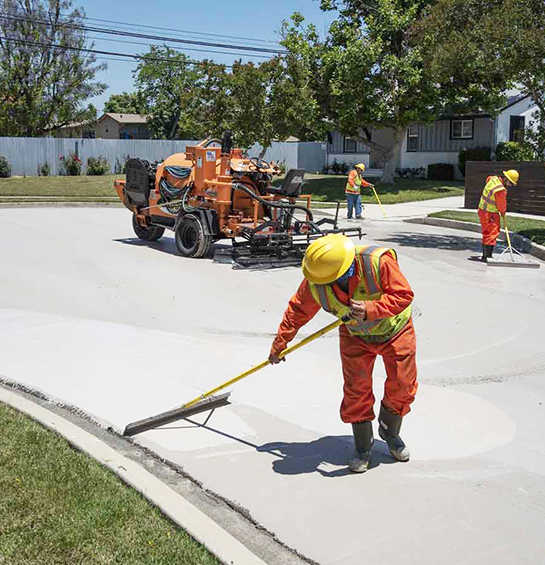
Do you recall, as a child, crossing a blazing hot road on your bare feet? Turns out, the detrimental effects of high roadway temperatures extend well beyond any blisters you may have acquired. It’s possible that reducing those temperatures could help slow global warming.
U.S. Energy Secretary Stephen Chu said, “Whitening the world’s rooftops and roads would have the same effect on global warming as removing all the world’s cars for 11 years.”
Chu, a Nobel Prize recipient and former scientist, presented his theory before a group in London during a global warming conference. Chu’s idea to lighten roads and rooftops as a mitigation strategy for global warming seemed extreme to most of his colleagues, yet they also found it brilliant.
Chu substantiated his theory with the research-based findings of Arthur Rosenfeld, Chu’s former associate at Lawrence Berkeley National Laboratory. The U.S. Department of Energy has also stated there are significant environmental advantages associated with Chu’s theory that were not previously known. The department maintains that “white roofs can reduce 10% to 20% of a building’s energy bill.”
How dark surfaces impact global warming
As dark pavements and rooftops absorb heat on a typical summer day, they may reach temperatures upwards of 150 degrees. The retained heat is released at night, resulting in an urban heat island effect that makes the city warmer than its surrounding urban areas.
In fact, the U.S. Environmental Protection Agency (EPA) says the temperature variance between city and urban areas at night can be as high as 22 degrees. Cities then face negative impacts on vegetation as well as airflow, which taxes cooling systems. By lightening the roads and rooftops, cities worldwide can combat the urban heat island effect and reduce heat absorption and even serve to reduce global warming.
Implementing a solution
Lightening the world’s roads and rooftops can be accomplished by either of two methods. The first is to simply apply white paint to roads and rooftops by spraying or rolling with a squeegee. The other technique—“cool pavements”—combines synthetic asphalts with titanium dioxide, an inexpensive mineral often used to make the sunscreens that protect our skin from the effects of the sun. As a road surface treatment, titanium dioxide works in the same way, reflecting the sun and protecting the surface.
Like the first method, the cool pavements mixture is easily applied on top of existing roads. It contains no harmful chemicals, helping maintain air quality, while also improving visibility for drivers and animals at night and reducing emissions for major benefits. Plus, unlike standard dark pavements that absorb 80–95% of sunlight, a lighter-colored surface lowers the air temperature to reduce the heat absorbed by surrounding buildings for energy savings.
To demonstrate the benefits, we look at the September 2021 findings by the city of Phoenix which worked in partnership with researchers at Arizona State University to engineer a pilot project using the cool pavement in city neighborhoods. Results after one year of the pilot found the whitening technology:
• Lowered surface temperatures at all times of the day
• Had an average surface temperature 10.5 to 12 degrees Fahrenheit lower than traditional asphalt
• Lowered nighttime air temperature at six feet of height on average a half-degree Fahrenheit than that of non-treated surfaces
Yet, is it too good to be true?
The downside of cool pavement
While the benefits are tremendous and the process simple, cool pavement as a solution to global warming is a little more complicated than it sounds.
Consider the sun’s rays when they bounce off a white surface and reflect upward. Where do they go and what do they do?
A report, titled “Unintended Consequences: A Research Synthesis Examining the Use of Reflecting Pavements to Mitigate the Urban Heat Island Effect” offers insight. Researchers found when sunlight is reflected into the atmosphere it contributes more to global warming and outweighs the benefits of painting the roads, causing Chu’s theory to lose momentum.
Cities and municipalities also face a big implementation hurdle with the U.S. Department of Transportation (DOT) since DOT requires dark-colored aggregates in mix designs.
One reason for the esthetic requirement is the ability for the darker surface to help to melt ice more quickly. And as always, costs for any improvement project may be a challenge. Los Angeles is currently spending $40,000 per mile to paint its streets white.
While it’s true there are overwhelming benefits for the city and its residents, are cool pavements a solution for global warming? Time will tell.
Carmichael is the Marketing & Economics Manager of Asphalt for Delek US Holdings, Inc. in Brentwood, Tennessee.












